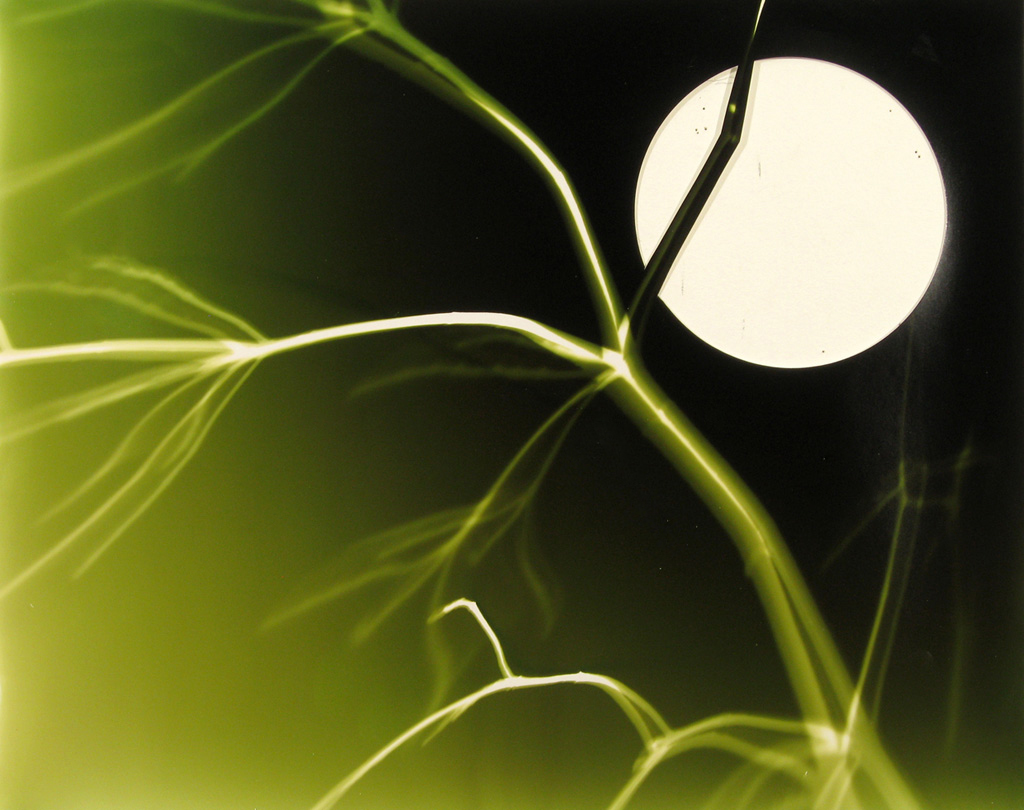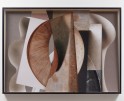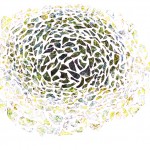Mary Pinto: Weavings, Cut Outs, After Sandy, and Home and Garden
The hand of the artist is uniquely distinct and evident in the work of Mary Pinto. Her photogram based cut outs, weavings, and collages feel sculptural, painterly and yet classically photographic. The great Romantic painter Eugène Delacroix wrote, “in the arts, all truths are produced by methods which show the hand of the artist.” Mary describes her process like this. “In the collages, I often shape images and text from newspapers into buildings, landscapes and organic forms, “drawing” with scissors or an X-Acto knife. The starting point is usually an impactful event such as the housing crisis of the last several years, or Hurricane Sandy in 2012. Words and images from the media work their way into these quickly made, intuitive pieces, which I often paint and draw on as well.”
“Through these quasi-sculptural ways of working, and the use of mixed media, I have the opportunity to build on my work, revisiting each piece and reconsidering its relationship to the forces of transformation and regeneration around us. In imitation of the natural order of things, I am constantly reworking the old to create the new.”
“Expanding on the language and uses of photography, my work explores the natural world and our relationship to it. The cameraless technique I use, the photogram process, is associated with the early stages of photographic exploration and invention, a time of wonder at the possibilities of photography as a way of recording the world. The resulting images recall early botanical and medical prints, as well as contemporary scientific imaging such as x-rays and scans.”
“I employ contemporary color photographic materials with this historic technique, using the printing process as a series of experiments that yield one-of-a-kind images of plants, flowers, and other natural subjects. Once I have made the photograms, I cut them into strips and weave them, or cut out certain parts and layer them, in an attempt to bring the photographic image more fully into the physical world, breaking down its preciousness. The woven grid of some pieces can suggest a pixelated image that is disintegrating and dissolving; the cut out areas in others seem to reveal underlying energetic networks that exist within the recognizable natural form. Some pieces curl and bend, coming off the wall, becoming kinetic. By intervening physically in the photographic print, I want to bring out both the ethereal qualities of my subject and the materiality of the print itself.”
Mary is based in Sunnyside, New York, and she received her M.F.A. from Bard College. Her photograms and collages have been exhibited at the College of St. Elizabeth, Hofstra University Museum, the Jamaica Center for Arts and Learning, St. Thomas Aquinas College, and Safe-T-Gallery, among other venues. Her work was included in “Minute”, a widely exhibited and collected portfolio of emerging artists published by Artists’ Space. Mary has been awarded residency fellowships at the Virginia Center for Creative Arts and the Artists’ Enclave at I-Park in Connecticut. Recently, she curated a permanent art installation in Queens for Art Connects New York, and a 2-venue exhibit in Long Island City, “Bloom Time”. Her work can be found in the Library of Congress, the Cuenca International Museum of Electrography, the Joan Flasch Collection at the School of the Art Institute of Chicago and numerous private collections.
Posts on Lenscratch may not be reproduced without the permission of the Lenscratch staff and the photographer.
Recommended
-
Photography Educator: Erin Ryan StellingJanuary 9th, 2026
-
The Female Gaze: Alysia Macaulay – Forms Uniquely Her OwnDecember 17th, 2025
-
Bill Armstrong: All A Blur: Photographs from the Infinity SeriesNovember 17th, 2025
-
Robert Rauschenberg at Gemini G.E.LOctober 18th, 2025
-
Erin Shirreff: Permanent DraftsAugust 24th, 2025







































































